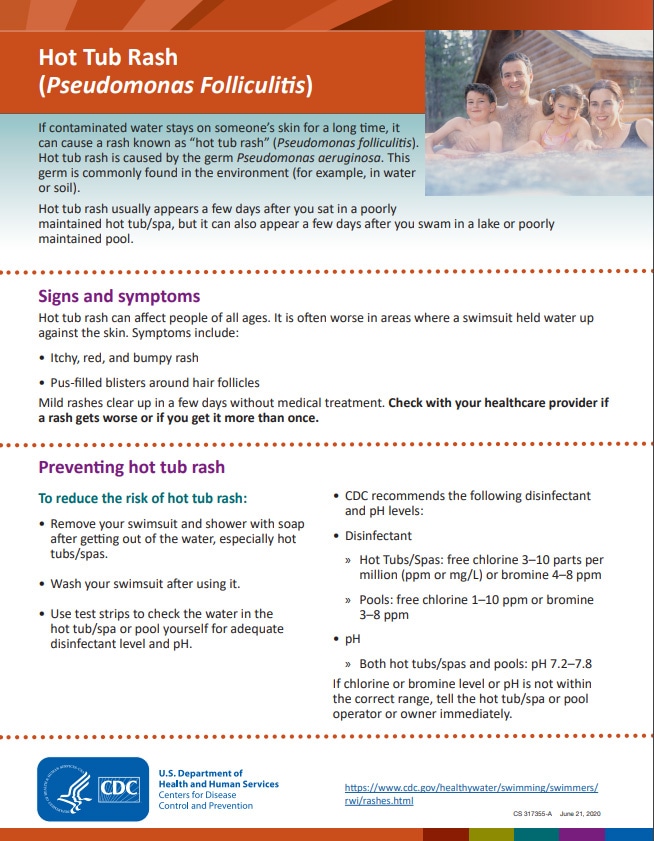Hot Tub Rash

If contaminated water stays on someone’s skin for a long time, it can cause a rash known as “hot tub rash” (Pseudomonas folliculitis). Hot tub rash is caused by the germ Pseudomonas aeruginosa. This germ is commonly found in the environment (for example, in water or soil).
Hot tub rash usually appears a few days after you sat in a poorly maintained hot tub/spa, but it can also appear a few days after you swam in a lake or poorly maintained pool.
Signs and symptoms
Hot tub rash can affect people of all ages. It is often worse in areas where a swimsuit held water up against the skin. Symptoms include:
- Itchy, red, and bumpy rash
- Pus-filled blisters around hair follicles
Mild rashes clear up in a few days without medical treatment. Check with your healthcare provider if a rash gets worse or if you get it more than once.
Preventing hot tub rash
To reduce the risk of hot tub rash:
- Remove your swimsuit and shower with soap after getting out of the water, especially hot tubs/spas.
- Wash your swimsuit after using it.
- Use test strips to check the water in the hot tub/spa or pool yourself for adequate disinfectant level and pH.
CDC recommends the following disinfectant and pH levels:
- Disinfectant
-
- Hot Tubs/Spas: free chlorine 3–10 parts per million (ppm or mg/L) or bromine 4–8 ppm
- Pools: free chlorine 1–10 ppm or bromine 3–8 ppm
- pH
-
- Both hot tubs/spas and pools: pH 7.2–8
If chlorine or bromine level or pH is not within the correct range, tell the hot tub/spa operator or owner immediately.
What questions can I ask before getting in a hot tub/spa?
CDC’s Hot Tub/Spa User Information page includes specific questions you can ask the operator before you get in the hot tub/spa to ensure it is well-maintained.
